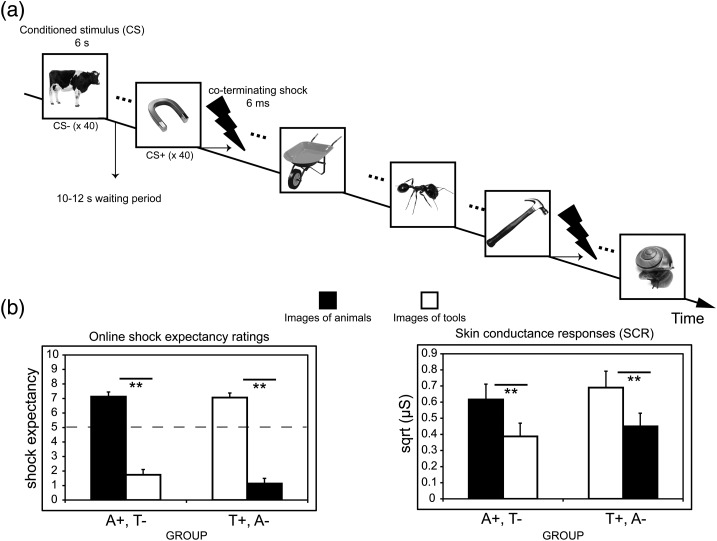Figure 1.
Fear conditioning procedure and behavioral results. (a) Subjects were presented with 80 unique exemplars of animals (40) and tools (40) for 6 s each. Exemplars were never repeated during the conditioning session. Half the objects from one category (CS+) co-terminated with a 6-ms electrical shock unconditioned stimulus (US), whereas objects from the other category were never reinforced (CS−). In this example, tools served as the CS+ and animals served as the CS− (category assignment was counterbalanced across subjects). Subjects learned through experience that an object category predicted shock. (b) Expectancy ratings showed that subjects learned the CS-US contingencies. Skin conductance responses (SCRs) revealed differentially greater responses to the category exemplars predictive of shock versus the safe category exemplars. Neither shock expectancy ratings nor SCRs were influenced by which object category (animals or tools) predicted shock. Dashed line depicts chance level of US expectancy. A+, images of animals predicted shock; T+, images of tools predicted shock; A−, images of animals were safe; T−, images of tools were safe; µS, microSiemens; Error bars represent ± SEM; **P < 0.01, 2-tailed t-tests.

